Mikoda Morning Market (神子田朝市)
2025-01-14he morning was brisk, in the low 40s, but the skies were clear and the sun was peeking just above the horizon. With my coat snug and my camera slung over my shoulder, I left the hotel and headed toward Mikoda Morning Market (神子田朝市). “Market opens at 5 and starts winding down around 7:45” I saw in my notes and it was already 6:50 a.m. From the hotel in Chuodori to the market in Mikodacho was 1.7 miles. Rather than take a taxi I decided to walk so that I could soak in the morning rituals of a city awaking.
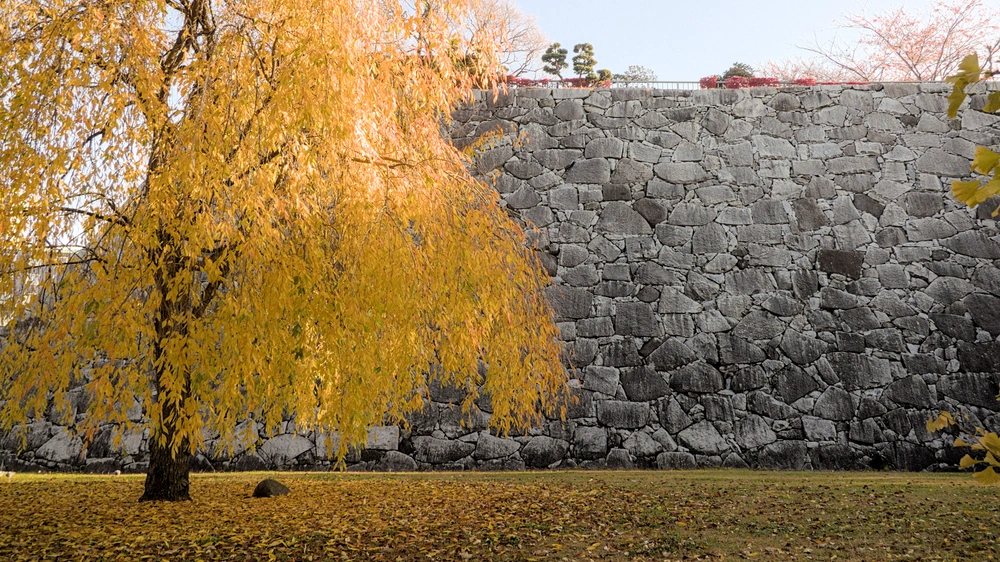
As I passed the stone walls of Morioka castle the rising sun struck the yellow foliage of a tree. We’d already wandered the park the day before, admiring the autumn foliage, but the vivid colors never grew old. I paused to snap a few photos, but couldn’t linger long—I had a market to explore.
Continuing southeast from the castle, the streets were still and quiet, only the occasional putter of a kei truck punctured the scene. Entering Natayacho, I passed Daijishimizu, an old-style freshwater spring. The water flows from one basin to another, each with a purpose: drinking water, rinsing rice, cleaning clothes, and finally, washing feet. I sipped some water from the top basin and continued my journey.
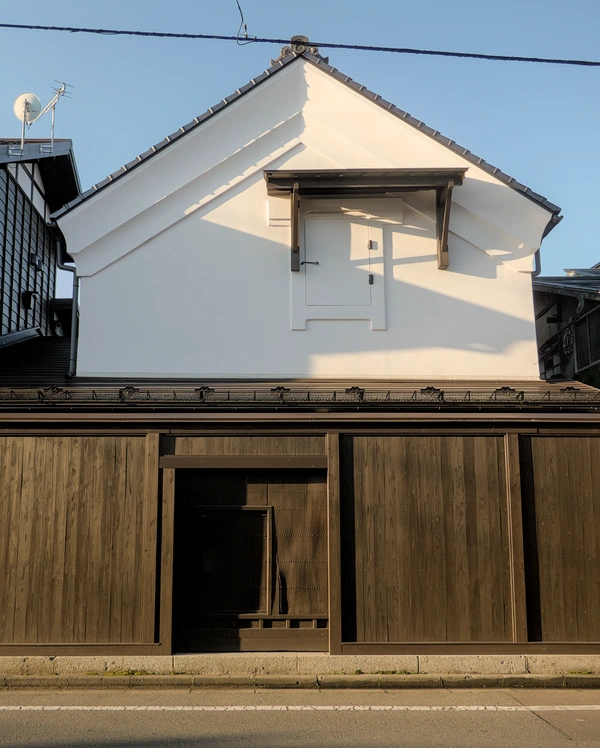
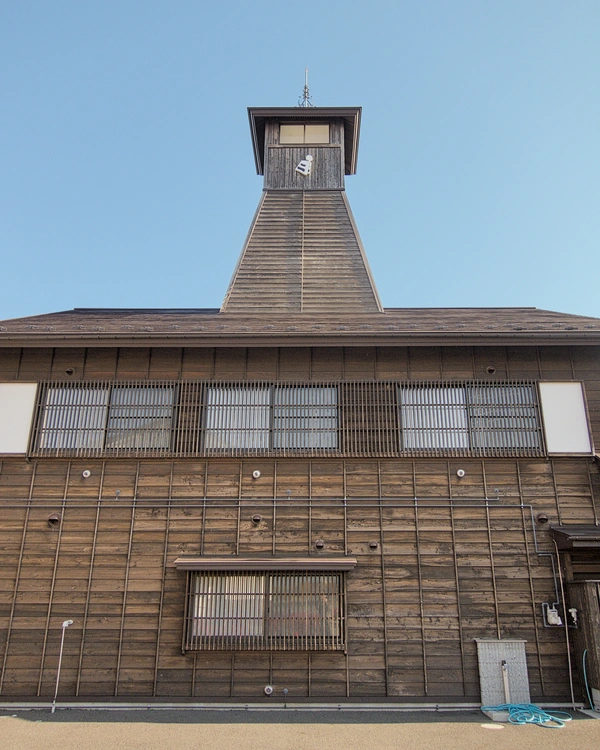
The street was flanked by numerous “Morioka Machiya”, traditional houses that have raw wood faces and distinctive vertical slats over the windows. Kyoto is known around the world for its machiya, where tourists flock hoping to catch a glimpse of a Geisha. Morioka’s machiya were those of merchants, so no Geisha and no tourists, just the hum of a city coming to life.
I arrived at the market around 7:30 a.m. It was sparse. The produce available: mushrooms, grapes, apples, and daikon reflected that the harvest season had come and gone in Northern Japan. Merchants in thick jackets stoked their wood stoves with fresh logs, keeping themselves and their tea kettles warm. One stall caught my attention with steam pouring out of a window and the sounds of soup splashing into a bowl.
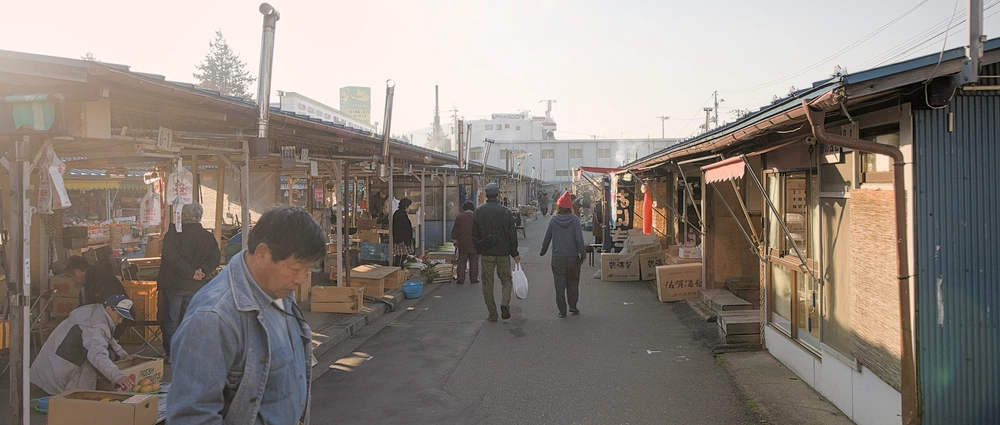
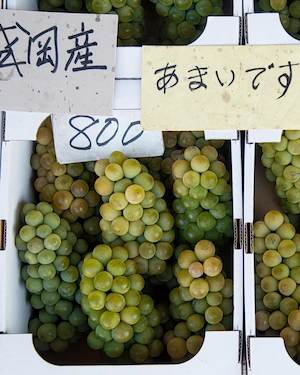


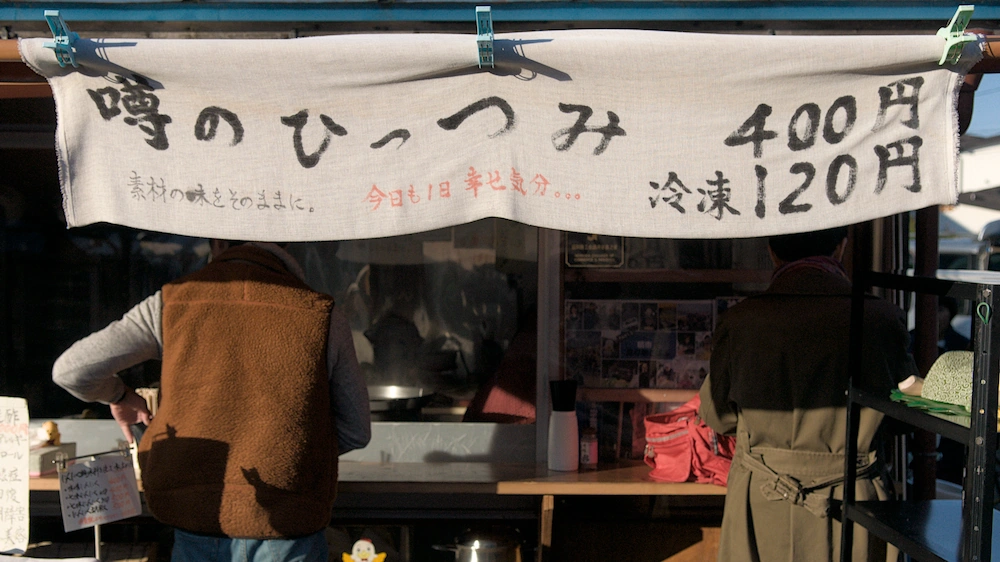
The noren hanging at the stall said 噂のひっつみ, “The Rumored Hittsumi.” If it’s rumored, it must be good, I thought. Even if it wasn’t, a hot bowl of soup would be a welcome medicine for the cold. The menu was simple: 400 yen for a bowl. A man and woman were inside preparing fresh bowls for customers. The man stood mostly still behind a bowl filled with a large dough ball and a vat of boiling water. The women bounced from one end of the stall to the other. I walked up to the window, ordered a bowl from the woman, and watched them go to work.
They appeared to be a husband and wife team. The man pulled a small piece from the dough ball, stretched it into a rectangle, tossed it in the water, and then repeated several more times. The woman prepared the toppings: burdock, carrot, shiitake mushrooms, fried tofu, and green onions. In broken Japanese, I asked if I could take photos and then told her where I was from, about the trip Tram and I were taking, how cold I was and the soup seemed like the perfect cure. We laughed together while the man, stoic next to his dough ball, prepared the next batch for a customer.
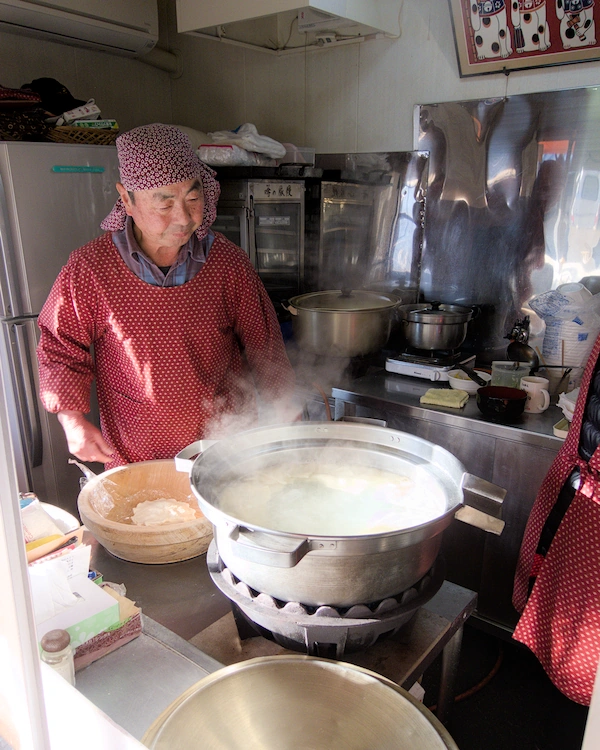
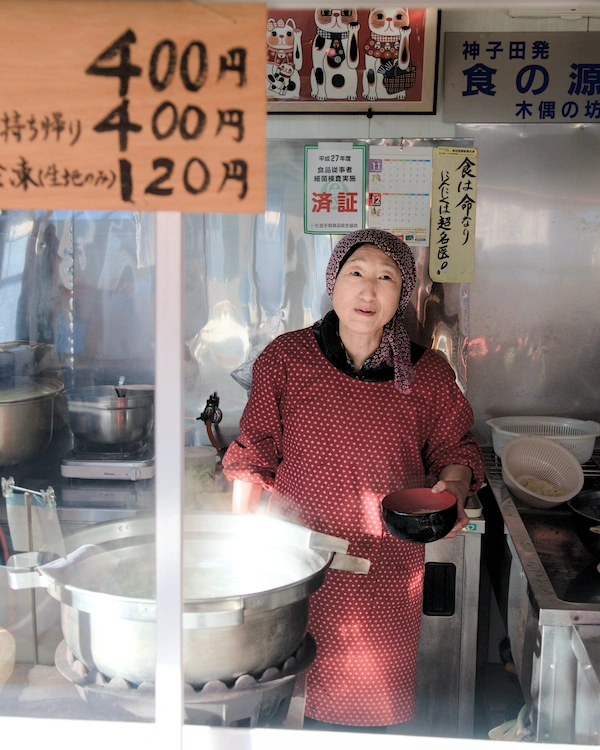
Steam, carrying the earthy aroma of burdock, rushed into my nose as the woman placed the bowl on the wooden counter. Beneath the toppings, nestled in a dashi soy sauce broth, were the thick rectangular noodles. I lifted one of the molten sheets out of the broth, gave it a hearty blow, and took a bite. It was simple, similar to udon, but more robust. I added a few shakes of shichimi—red chili powder mixed with other spices like sansho pepper, sesame seeds, nori—to take the warmth up a notch.
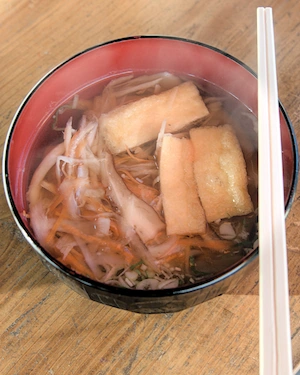
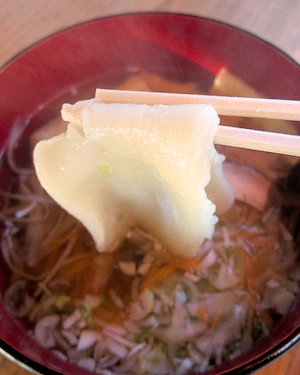
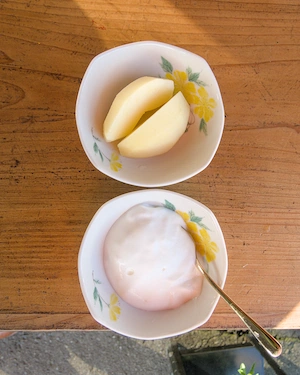
I paid the woman and handed her my empty bowl with a gochisousama deshita, thank you for the meal. As I was checking my bag two bowls appeared in front of me. Apple slices in one and yogurt in the other. A sweet treat to compliment the conversation with the woman.
This story and it’s photos are from a trip to Japan in 2015. Tram and I traveled from southern to northern Japan by train using a JR Rail Pass. We spent one night in Morioka on November 5th and then continued on to Hirosaki. My walk to the market occurred on November 6th, 2015.
Notes
- Morioka Machiya Monogatari Museum is a sake brewery turned museum in Natayacho that is open from 9 a.m. to 7 p.m. most days.
- The hittsumi stall at the market has become quite popular, even appearing in some TV shows and Youtube videos:
- Mikoda Morning Market opens at 5 a.m. and closes around 8:30 a.m. and is open most days except Monday.